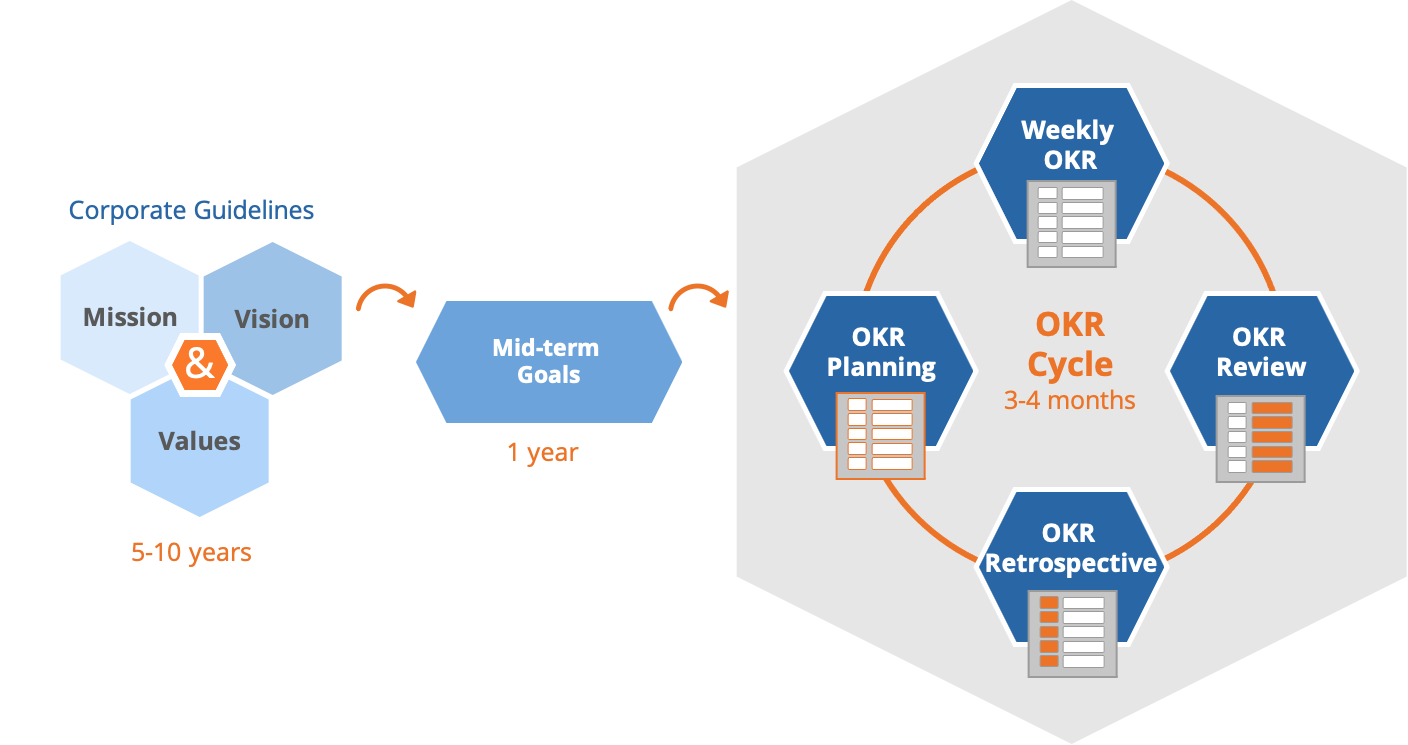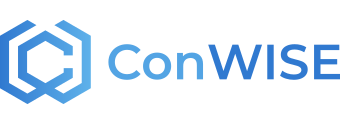
Objectives & Key Results (OKR method) at a glance
Procedure for the OKR method
- First, you determine for whom (company, department, team, employee, etc.) and for what period (for a quarter) the OKRs are defined.
- You then define five goals.
- For each goal, you derive three to five concrete results for goal achievement.
- Check the achievement of the goals at regular intervals. To do this, look at the concrete results. This is done with the help of measurable scales or concrete quantitative characteristics.
Description of Objectives & Key Results
Objectives and Key Results (OKR) is a management method for setting concrete and measurable goals. The methodology was invented and introduced at Intel in the 1970s. The company Google helped her to gain new popularity, where she is used as a key management tool. The idea behind it: a company, but also departments and individual employees set five goals for each quarter. These are stored with no more than four core results (key results) that are necessary to achieve the goal. The achievement of the results and goals is checked at regular intervals (OKR cycles).
This method was developed by John Doerr and Andrew Grove.
Thematic classification
Management tool in agile organizations, among others.
Who benefits from this method?
- Agile Organizations
- Corporations
- Companies
- Business units
- Departments
- Projects
- Startups
Practical tips
- You should plan regular reviews in your team. The ConWISE platform allows you to easily check the OKRs.
- A key benefit of OKRs is that you can break down goals. Starting with the overall goals of companies down to business units and departments. Ultimately, individual goals at employee level can be derived from this. One OKR session can be created on ConWISE for each level.
- Managers who are new to a company can already show concrete results after a short time. It suits you that employee goals should be limited to 3 months with the OKR method. You can find more about this in our article “First 100 days: 5 tips for managers” .
Limits of Application
Evaluation of the results could also lead to changes in objectives and new actions. This is part of the methodology and supports an agile management approach.

